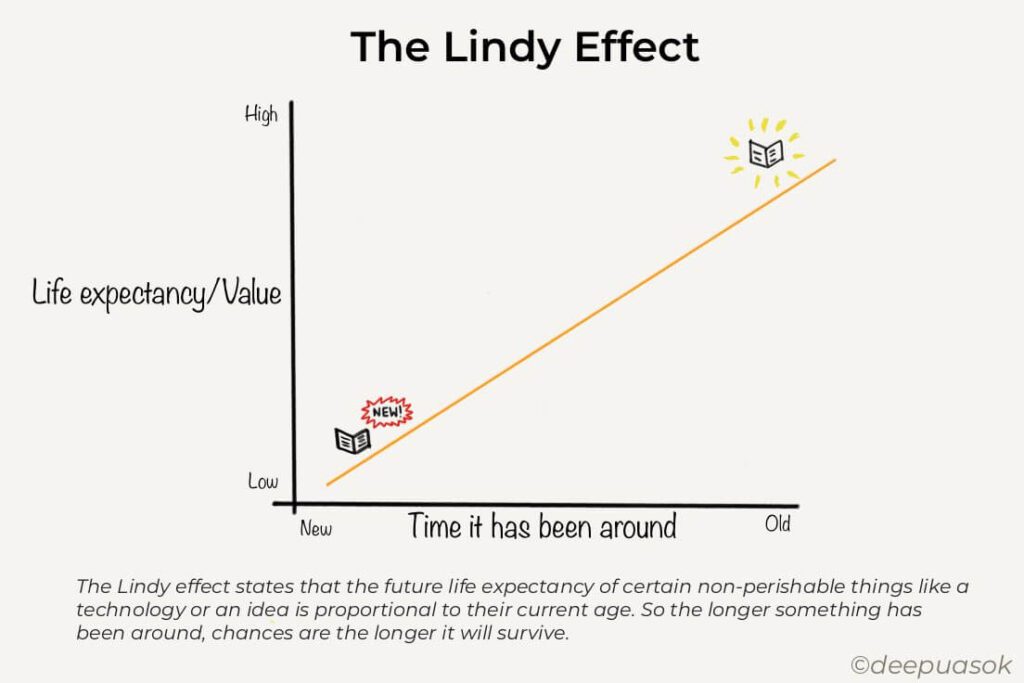The Lindy Effect

The Lindy effect is a powerful heuristic and can be applied in our lives as far as the relevancy of non perishable concepts is concerned.
There is a lot of noise in the world. In a world where there is a lot of digital information, it is getting harder and harder to find the signal, also called important content, that can help you make better decisions.
Fortunately, there is a rather straightforward method for separating the information that is truly important from the rest of the noise. The phenomenon is known as the Lindy Effect.
Consider Shakespeare’s “Macbeth.” He penned it in 1606, and it has been in circulation for almost four hundred years. According to the Lindy Effect, we should anticipate that it will be somewhere in the neighbourhood of another 400 years.
On the other hand, we may anticipate that it will be around for another 500 years if it continues to exist in the mainstream for another 100 years. The longer it stays around, the more likely it is that it will still be around for a long time to come.

The Lindy Effect expects us to respect and adhere to old trends. In “Antifragile,” Nassim Taleb, did a great job of capturing this well:
“If a book has been in print for forty years, I can expect it to be in print for another forty years. But, and that is the main difference, if it survives another decade, then it will be expected to be in print another fifty years.
“This, simply, as a rule, tells you why things that have been around for a long time are not “ageing” like persons, but “ageing” in reverse. Every year that passes without extinction doubles the additional life expectancy. This is an indicator of some robustness. The robustness of an item is proportional to its life!”
Applying the Lindy Effect will encourage you to “wait and see.” Suppose you are investigating, for example, electric versus gasoline engines, because each year a “newcomer” survives, it implies a proportionate increase in their longevity. In other words, the stability of new projects improves and their fragility reduces with each passing year that they are allowed to continue.
The Lindy Effect was first discussed in relation to the opportunities available to comedians in the workplace and was given its name after a deli in New York. Since then, the concept has been expanded so that today, the current age of a non-perishable object has a direct bearing on the future life of the item. This represents the age-old proverb that things that have been there for a long time and “passed the test of time” may be relied on.
The effect doesn’t have any effect on things that naturally break down or things that are alive. This means that if you are getting close to ninety, your life expectancy is likely to be short. The approach, on the other hand, is meant to be applied to non-perishable things like enterprises, literature, ideas, and technology.
This model acts as a helpful stimulus to take a more holistic view of the changes and patterns that are occurring. You may find it difficult to comprehend the ramifications or complexity of a new trend while it is developing, but, as time passes, you will be able to see the potential it possesses as well as the influence it may have.
The Lindy Effect enables us to distinguish between what is stable, or what is significant over extended periods of time, and what is irrelevant. If you wish to acquire strong concepts, You should look for information that will continue to be useful for many years to come.
Meaning is naturally filtered via the lens of time. The fact that something has been around for a very long time indicates that it is still significant in some regard. It serves a purpose. And this is the type of information that is valuable to have.



